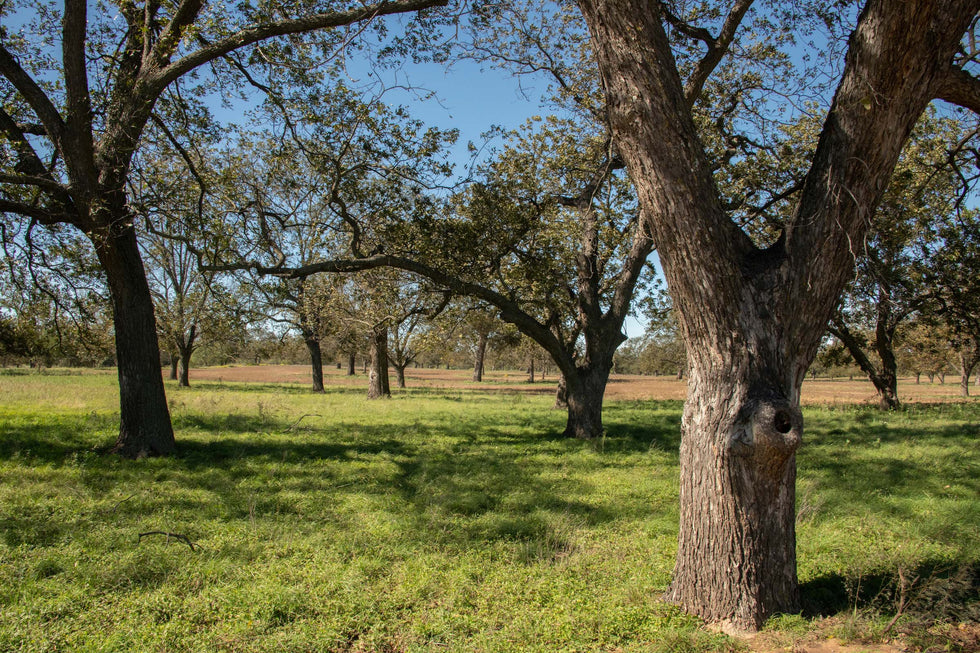
Trees bearing pecan nuts are classified as hickory, native to Southern US and Northern Mexico in North America. Pecan is extensively farmed, especially in Texas and Georgia, chiefly for its nuts. Texas, New Mexico, and Georgia together account for almost 80% of the global production of pecans. Pecan nuts are edible seeds that can be consumed as roasted pecans or even as raw pecans when fully ripe.
Pecans are also used for rustling up mouthwatering food items like pecan pie and praline candy. Pecan trees grow and develop at a moderate rate, gaining a maximum of 2-4 feet of growth every year provided good care is taken. Here's how to plant an orchard.
Do Pecan Trees Grow Fast?
Many people in the US plant and nurture pecan trees in their backyards for adding to the overall gracefulness. A single tree does not produce enough nuts that might be sufficient for year-round consumption. Therefore, you’ll need to cross-pollinate at least two trees so that you have an adequate yield of pecan nuts.
The trees thrive in the hardihood zones (zones 6, 7, 8, and 9) identified by the US Department of Agriculture that are situated in the hinterland of the Mississippi River. The pecan trees yield a rich crop one year, and in the subsequent year, the harvest is relatively lighter, and this trend endures. This is known as alternative bearing.
If you take proper care of the trees, you can expect the trees to live for 100 years. While planting the saplings, ensure you keep a sufficient gap between two trees, water the plants regularly, and add nutrients to the soil.
Nevertheless, a pecan tree's growth rate depends upon numerous factors like drainage, water, fertility, spacing, and exposure to sunlight. A pecan tree can reach a height of 100 feet when fully mature. However, not all trees attain this height, but the majority of them grow up to at least 70-80 feet.
Georgia and Texas pecan trees can reach a height of 100 feet. If you’re planning on growing pecan trees in your garden, then bear in mind that the trees take up sufficient space. The canopy of the trees can extend up to 45-75 feet all around.
The tree is deciduous, implying that it sheds leaves during a particular season every year. The tree’s trunk usually has a diameter of 6 foot or 2 meters. Since the tree is categorized under the hickory species, its seeds do not qualify as nuts but are known as drupes, technically speaking.
Habitat and watering of Pecan Trees
Pecan trees need plenty of sunshine as well as space together with good drainage for growing healthily. The trees thrive best in sandy loam soil type and do not tend to grow naturally in clayey soils. At the same time, the trees are unable to tolerate stagnant water (that could prevent the circulation of air).
Therefore you’d have to ensure that the water leaches or drains after you’ve watered the ground. Additionally, you’ll have to make arrangements for supplying water through irrigation if your area does not receive adequate rainfall. Pecan trees approximately 1 inch of water per week.
Fertilization requirements of Pecan Trees
Offer fertilizer to the young trees early in the spring in a ratio of 10:10:10, i.e. equal parts of nitrogen, phosphorus, and potassium. Also, try to maintain the pH level of the soil between 5.5 and 6.5.
Spacing of Pecan Trees
When you’re growing pecan trees in your backyard, ensure to maintain a spacing of about 60-80 feet between any two saplings. Maintaining this gap allows the trees to grow naturally.
Conclusion in a nutshell
If you cultivate seeds, your trees will start bearing fruit when they’re 10-14 years old. The trees will become fully mature when they’re 18-22 years old. Alternatively, if you’re farming from grafts, pecan trees become fully grown when they’re 14-16 years old but start bearing nuts at the end of 6-8 years.

